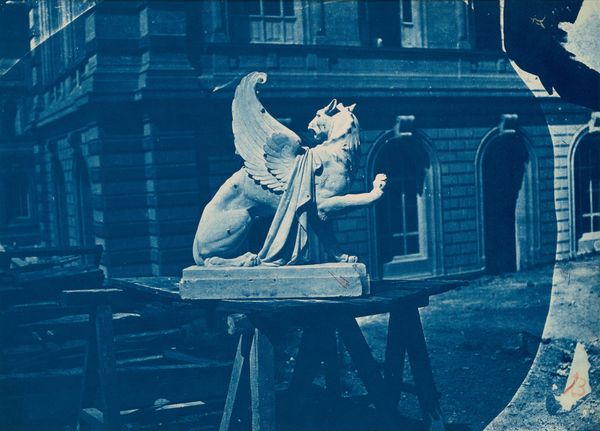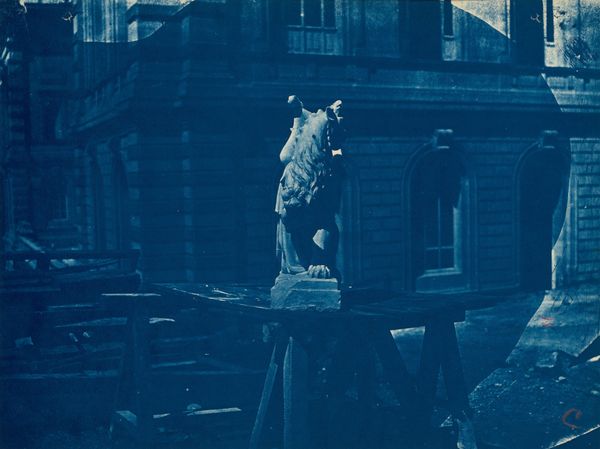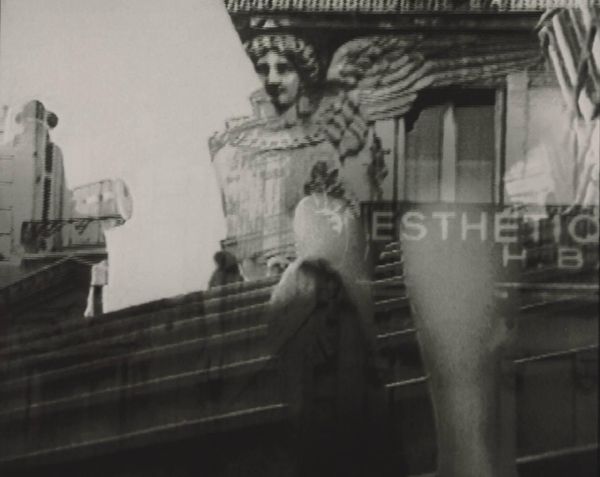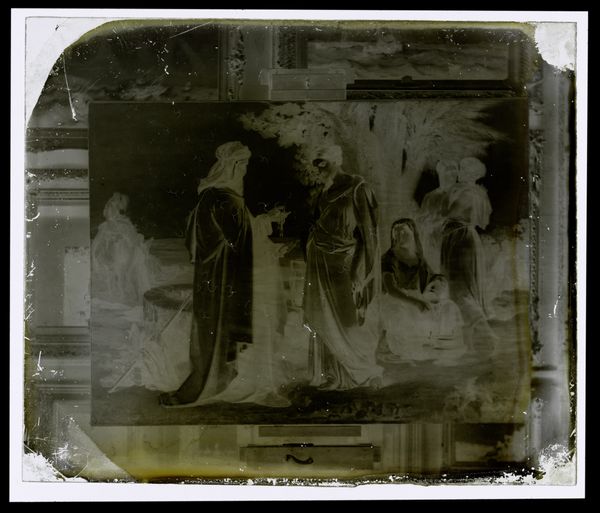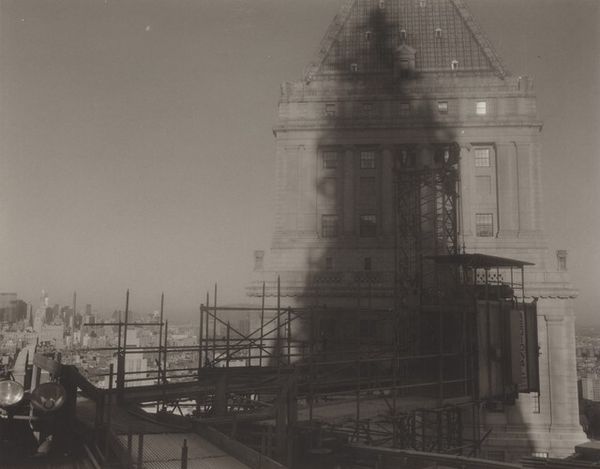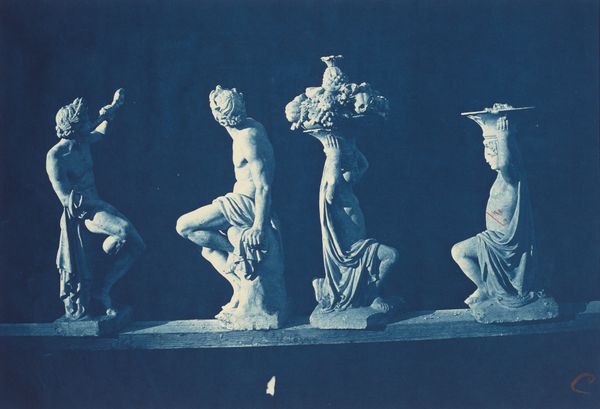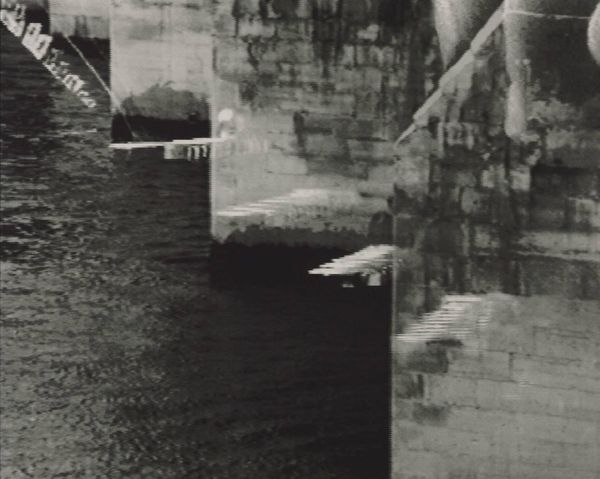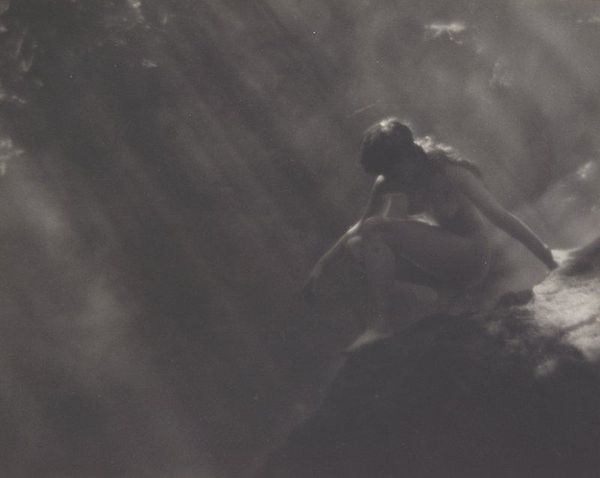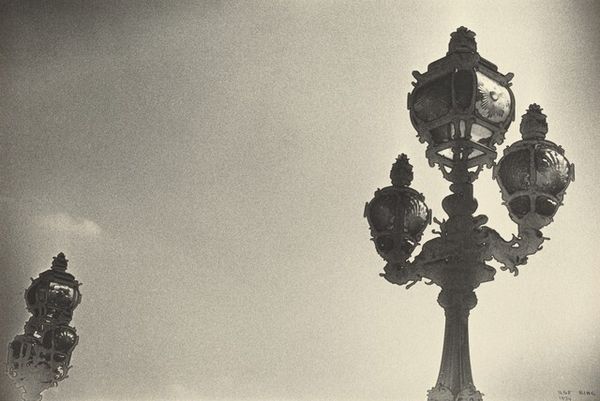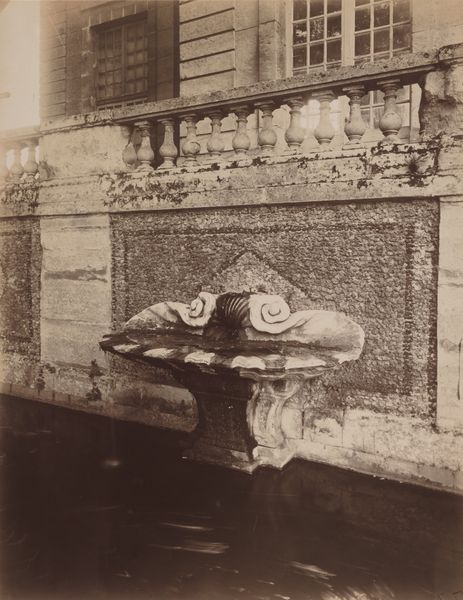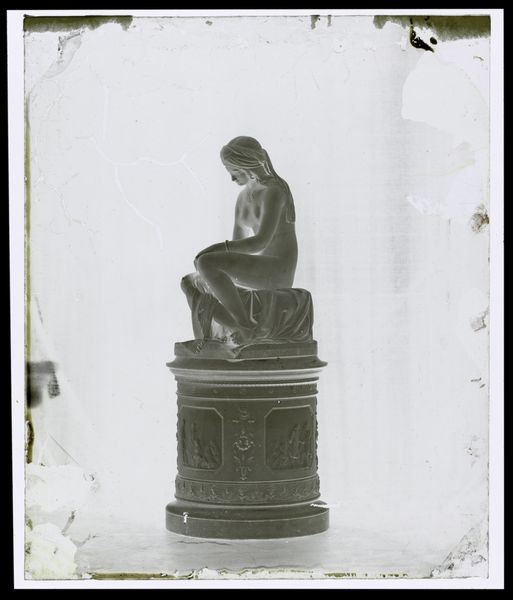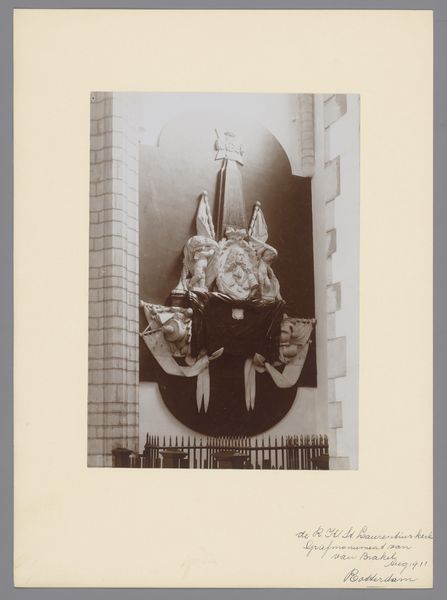
Sculpture de griffon sur un chantier à Marseille (Sculpture of a Griffin on a construction site in Marseille) c. 1866 - 1868
0:00
0:00
Dimensions: image/sheet: 27.94 × 38.1 cm (11 × 15 in.)
Copyright: National Gallery of Art: CC0 1.0
Editor: This cyanotype by Adolphe Terris, made sometime between 1866 and 1868, is called "Sculpture de griffon sur un chantier à Marseille", or "Sculpture of a Griffin on a Construction Site in Marseille." I am struck by the eerie blue tone and how the mythical griffin sits amidst what appears to be a busy construction site. It’s such a contrast! What can you tell me about the significance of this image? Curator: This cyanotype offers a fascinating look at 19th-century urban development and its representation. Marseille was undergoing significant transformation at the time. We often see photographs celebrating completed monuments, but here, Terris captures a city in flux. The griffin itself is telling – likely part of some civic architecture, a symbol of power and perhaps vigilance, caught within the realities of modernization. Notice how the construction seems to encroach upon this symbol. Editor: So the photograph is more than just a picture of a sculpture, it's about how the city is changing? How did exhibiting artworks and architectural photographs impact urban development at the time? Curator: Exactly! Photographic documentation played a crucial role. These images weren’t simply records, they were carefully chosen and presented. Think of how world's fairs and expositions became showcases for progress. By circulating photographs of urban improvements and integrating ancient architectural emblems with those ongoing urban "improvements," like this griffin, cities were actively constructing a visual narrative of advancement, both for domestic and international audiences, which shaped public perception and civic identity. Editor: I never thought about photography as a tool for shaping public opinion! I always associated art and progress with painting or sculpture. Curator: Indeed! Consider the choices made by Terris. Why the griffin, and why during construction? He encourages us to consider how cities negotiated tradition with modernity and how new public images influenced society's perceptions of space and identity. It makes you wonder what other narratives lie hidden beneath the surface of seemingly straightforward documentary photographs. Editor: That's incredible. I see this image in a completely different light now. I now notice a kind of staged tension between the modern construction and the static Griffin as a relic of a bygone period. Curator: I'm glad that a historian approach changed how you viewed it. The key is in seeing not just what’s depicted, but understanding how that depiction was constructed within a specific historical context.
Comments
No comments
Be the first to comment and join the conversation on the ultimate creative platform.
